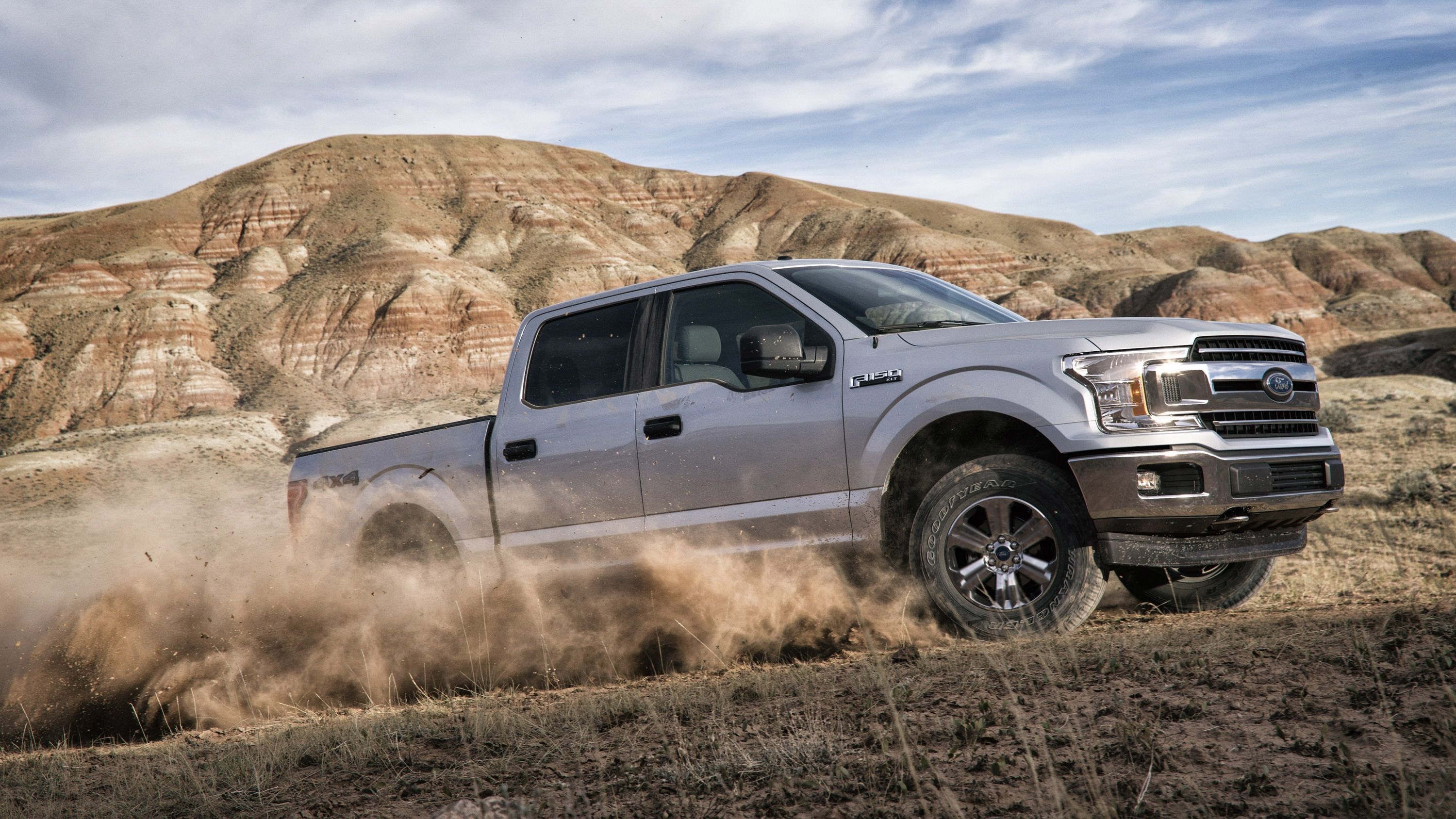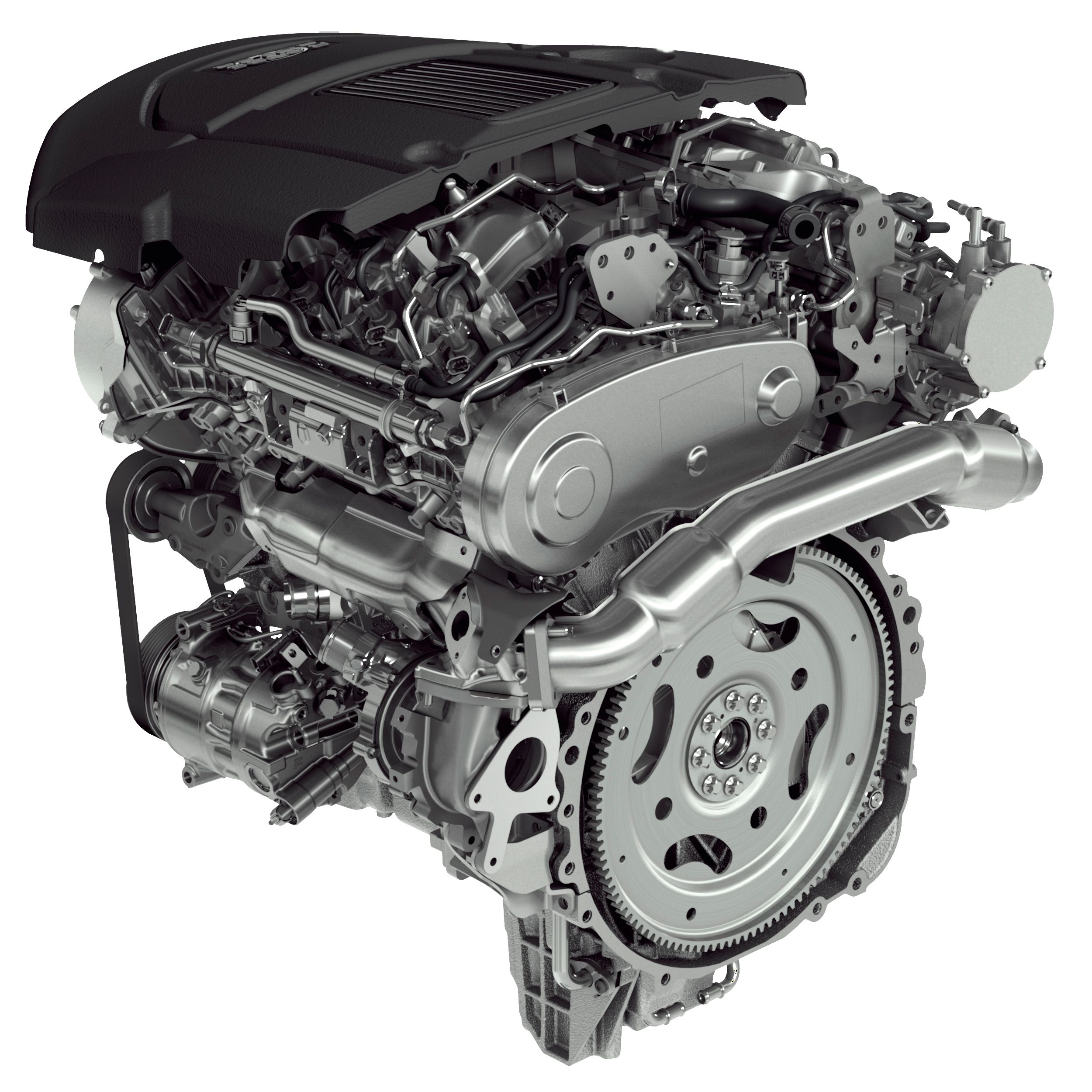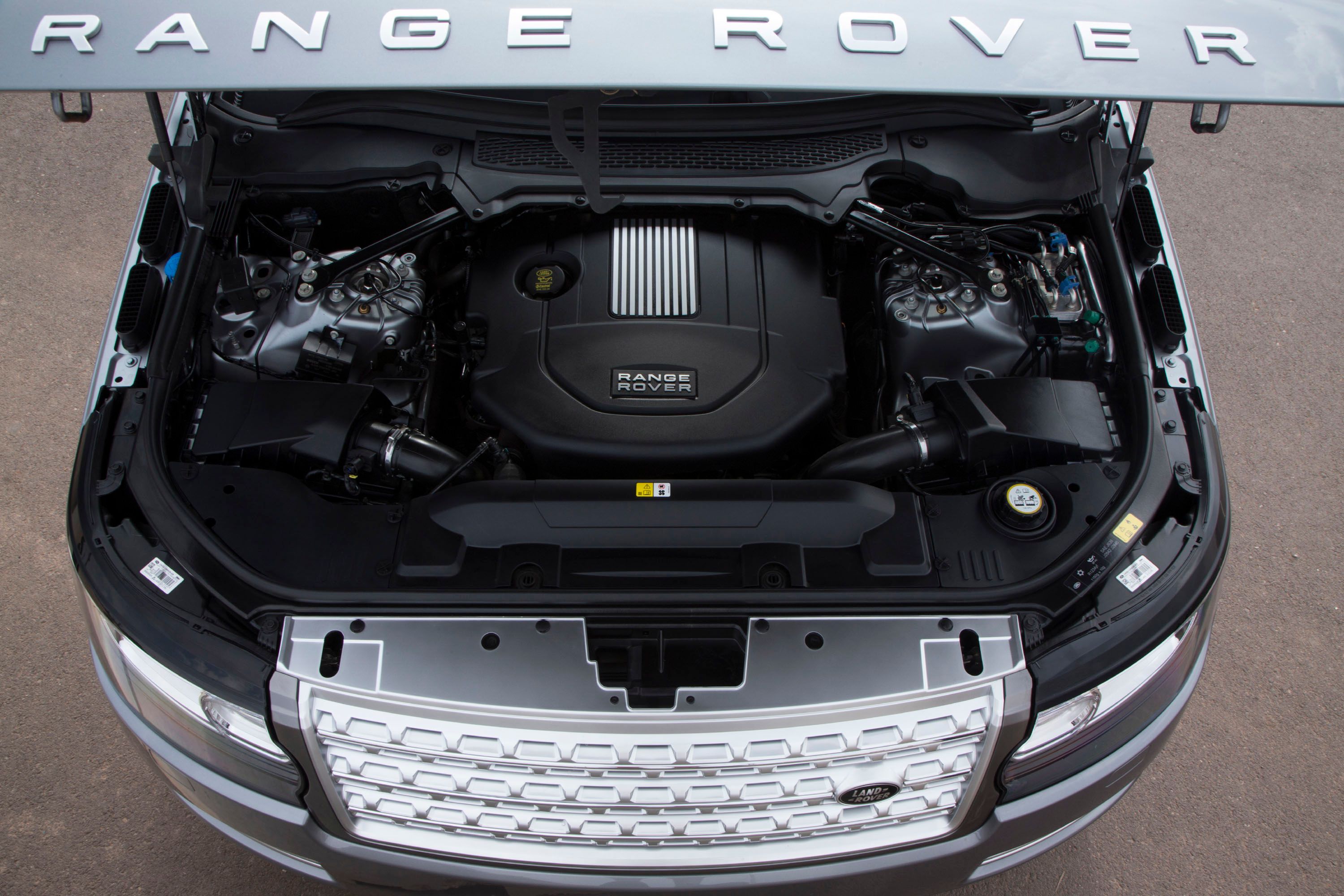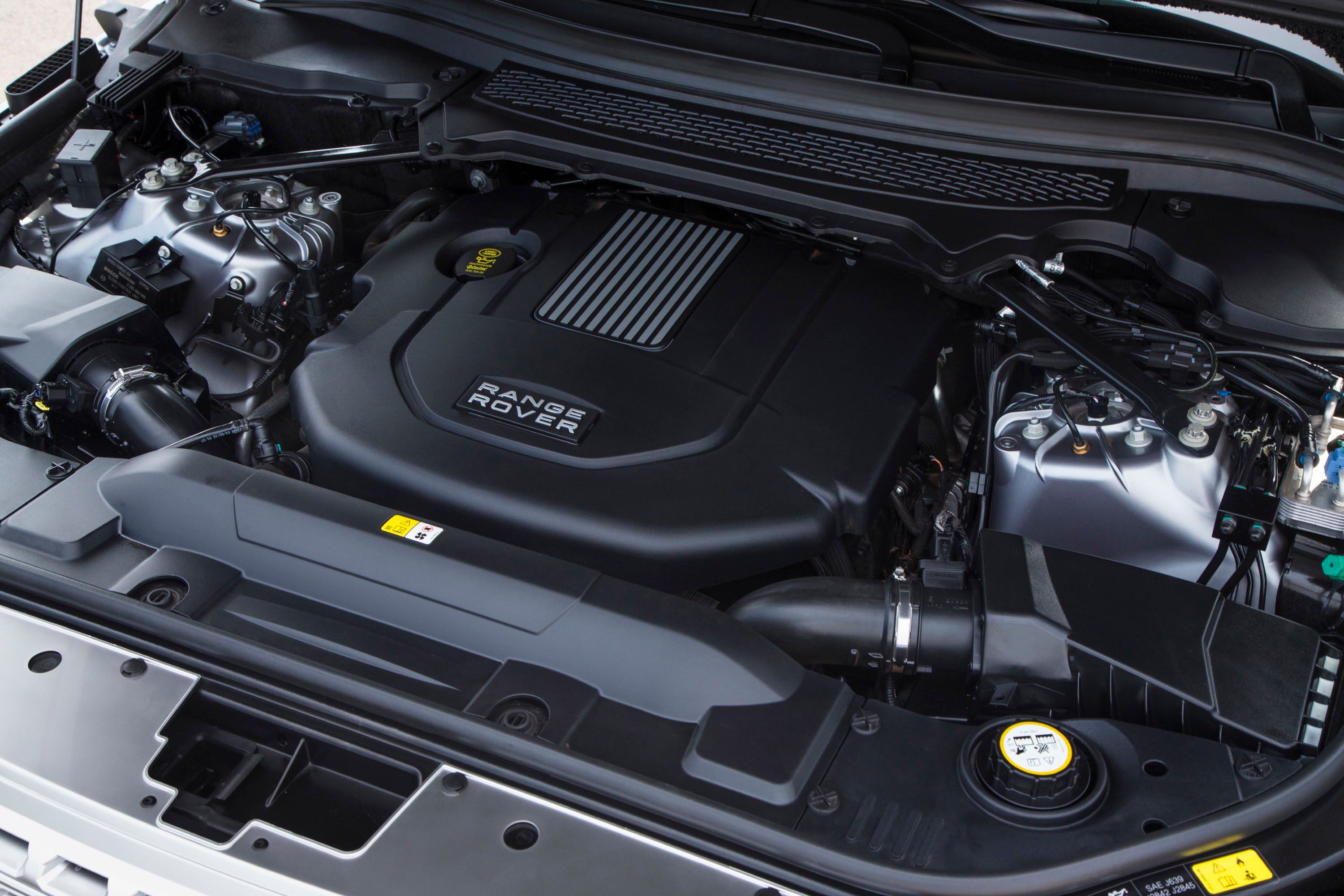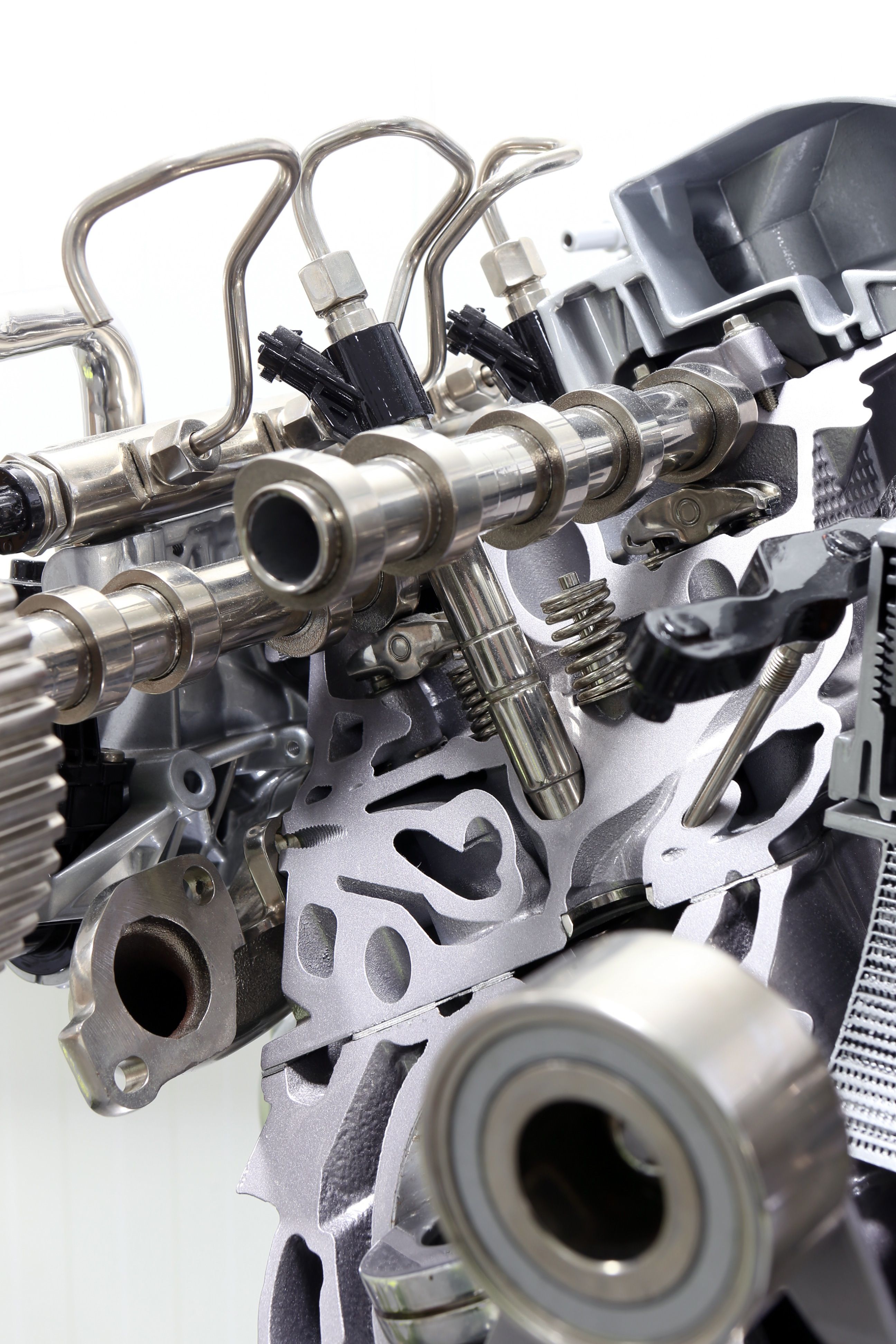Ford made big waves in the half-ton pickup segment when it announced the 2018 F-150 would be available with a V-6 turbodiesel. Details about the new 3.0-liter have been scarce, with Ford only divulging it was designed, engineered, and tested in-house and that it will wear the Power Stroke name. Fortunately for us, Ford’s corporate ties to Jaguar Land Rover give telling clues about the new Power Stroke.
See, Jaguar Land Rover’s 3.0-liter V-6 Td6 turbodiesel is actually a Ford engine – a byproduct of Ford’s past ownership of both Jaguar and Land Rover. The engine is even found in Peugeot and Citroën cars, too, as part of the Lion engine series. Introduced in the U.S. for the 2016 model year, the 3.0 Td6 plays a staring role in Land Rover’s new Discovery, the Range Rover, and Range Rover Sport. To show off the Td6’s abilities, Land Rover recently hitched a diesel Discovery to a 121-ton road train in Australia. The 328-foot-long semi truck included seven trailers – three more than what’s typically legal to tow across the open roads of the Outback. The Discovery’s turbodiesel and full-time 4WD system seemingly had no problem moving the 242,000-pound behemoth 10 miles across a flat stretch of closed highway. That’s an impressive feat given the engine’s output of 254 horsepower and 443 pound-feet of torque. While Ford hasn’t disclosed its 3.0-liter Power Stroke’s specs, we can bet big money it won’t make less power than its Land Rover twin. So what does that mean for the mid-2018 F-150? Keep reading to see what we think.
Continue reading for more information.
Land Rover Gives A Good Glimpse At The F-150’s Diesel Future
It’s hard to predict the future, but having giant clues sure makes things easier. It’s thanks to Jaguar Land Rover that we have an idea about how the F-150’s new turbodiesel will perform.
The 3.0-liter V-6 Td6’s main block is constructed from Compacted Graphite Iron, just like Ford’s 6.7-liter Power Stroke V-8 and the EcoBoost V-6s available in the F-150. The material is said to have a higher tensile strength than standard gray cast iron, offer better fatigue strength over aluminum, and weigh less than standard gray cast iron. The block also features a deep skirt with cross-bolted main bearings for added strength. A one-piece aluminum oil pan actually adds structural rigidity, too, while helping cut noise levels during operation.
The Td6 uses dual-overhead camshafts to control four valves over each cylinder. A single turbocharger forces air into the engine and a high-pressure fuel system squirts fuel directly into the combustion chambers. Keeping emissions in check is a low-pressure EGR system and a diesel exhaust fluid system. Interestingly, the low-pressure EGR system pulls air further down stream in the exhaust system – past the DEF filter – in an effort to get cooler air. This air is then routed into the turbocharger, then through an intercooler. The result is relatively cool (and therefore more dense) pressurized air being forced into the combustion chambers. Though this system passes the EPA’s strict emission requirements, there’s a good chance Ford will modify its operation for use in the F-150.
As for fuel efficiency, the Land Rover Discovery Td6 with its eight-speed automatic transmission, full-time 4WD system, and its 5,500-pound curb weight get and EPA-estimated 21 mpg city, 26 mpg highway, and 23 mpg combined. The Td6 does even better in the Range Rover and Range Rover Sport, earning an EPA-estimated 22/28/24, respectively.
Td6 Turned Power Stroke
The next few paragraphs will be speculation, of course, since Ford has yet to disclose much information on its new baby Power Stroke. But as mentioned before, we’re positive Land Rover’s Td6 gives a good idea about what to expect.
On paper, the Td6 is surprisingly on-point for use in the F-150. It sizes up rather well against its main competitor, the Ram 1500’s 3.0-liter EcoDiesel V-6. That engine generates 240 horsepower and 420 pound-feet of torque and affords the Ram 1500 an impressive 20 mpg city and 28 mpg on the highway. In Ram’s fuel-sipping trim, the 1500 HFE, the EcoDiesel squeezes out 21 mpg city and 29 mpg highway without any reduction in power. (Ram uses taller gearing in the rear axle and a few other tricks on a base-model, quad-cab truck with almost zero luxury features.) The Ram 1500 EcoDiesel can also pull up to 9,200 pounds on its hitch, only 1,200 pounds shy of the 5.7-liter Hemi V-8. The EcoBoost HFE is limited to 7,920 pounds of towing.
You can bet Ford will attempt to match, if not exceed, the Ram EcoDiesel’s numbers. In its Td6 form, the engine already out-powers the EcoDiesel with 254 horsepower and 443 pound-feet of torque. We’d figure on the Power Stroke version to make at least 260 horsepower and 450 pound-feet of torque. Round numbers are better for marketing purposes, after all.
Ford did confirm the F-150 Power Stroke will utilize Ford’s new 10-speed automatic transmission. The two extra gears give engineers a better shot at hitting that magical 30-mpg highway. That’s certainly a possibility given the F-150’s aluminum body and curb weight that ranges between 4,050 and 4,900 pounds, depending on cab, bed, engine, and drivetrain configuration. The 2015 Ram 1500 EcoDiesel Crew Cab with 4WD and the mid-grade Big Horn trim package tested by Car & Driver reportedly weighted 5,688 pounds. Though the Power Stroke V-6 will likely add between 150 to 300 pounds to the F-150’s total weight, the F-150 should still be lighter than the Ram when all variables are comparatively matched.
As for towing, the Land Rover Discovery Td6 can pull 7,716 pounds on its hitch. That’s impressive for a unibody SUV with an independent rear suspension tuned for on-road comfort and off-road flexibility. The F-150 Power Stroke will undoubtedly have a more impressive rating, especially given how competitive the truck segment has become over this metric. We’d bet on a 9,000-pound tow rating and a payload capacity around 2,000 pounds.
Conclusion
Ford is taking a bold step in offering a V-6 turbodiesel in its F-150. While Ram was the first, Ford arguably has more at stake. The F-150 represents a massive portion of Ford’s sales and there is simply no room for mistakes or tarnished perceptions. The F-150, along with the Super Duty that make up the F-Series lineup, sold more than 820,000 vehicles in 2016, making it the best-selling vehicle in America by far. Adding a turbodiesel should help satisfy customers who have been clamoring for one for decades, while helping the F-150 hit that all-important CAFÉ requirement with improved fuel economy.
Once Ford released the 3.0-liter Power Stroke’s figures, we’ll bring that information to you. In the mean time, we’re left wondering if General Motors is dusting off that 4.5-liter V-8 Duramax it had almost finished before the recession.
References
2018 Ford F-150
Read our full review on the 2018 Ford F-150.
Land Rover Discovery
Read our full review on the Land Rover Discovery.

